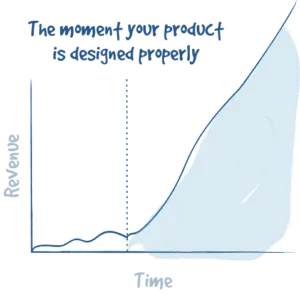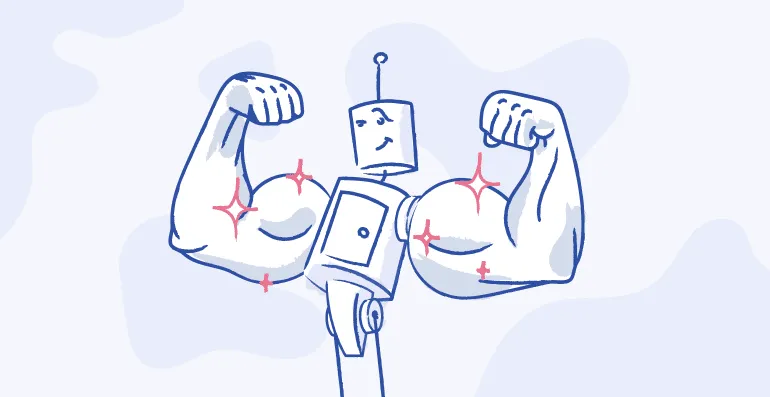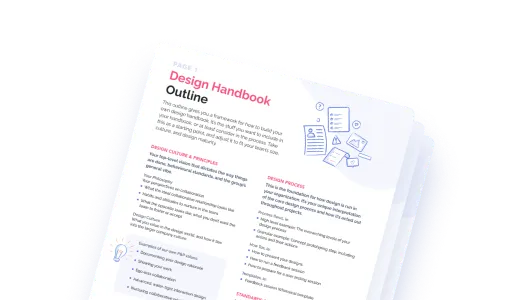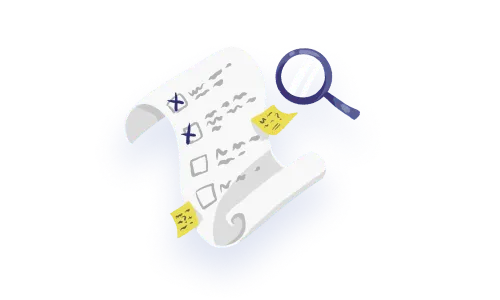

So you have a shower thought. Instead of the usual pizza vs pasta debate, you’ve come up with a brilliant idea for a product that could really make its mark in the world. But how can you bring your idea to life? How do you ensure it will be successful and centred around what users actually need and want? And most importantly, how do you know if your product is something that people actually want and need (what’s the UX of your product?!) – what’s known as ‘product-market fit’ (PMF)?
Often in our world of enterprise B2B software, the UX gets brought in when a software company realizes that they are being out-done by young whipper snappers, that is, emergent competitors who are out-flanking them and stealing their market share. In this scenario, they are looking to address a lot of design debt and recalibrate how their teams work. We also see a lot of companies which have reached a tech debt level which makes new features so difficult and costly to implement, they need to rebuild and rethink.

Regardless of the precise scenario you find yourself in, chances are you need to be relevant competitive and fill a real user need. Design plays a role in so many parts of this mega puzzle, whether it’s the innovation part, mapping flows and ideas, testing and iterating, we work alongside product people to create direction and clarity and of course manage complexity in everything we do.
We’re working with founders and established companies to figure out product strategy and work through things everyday. For P&P, as we expand into the world of ventures and innovation even more, we need to appreciate the challenges startup founders face on a deeper level. So we asked our good friend Woody De Kafou to help us understand this topic.
Product market fit can be a tricky term to define. It may seem simple, but appearances can be deceiving. Essentially, it means that your product fits into the market you’re targeting. You’ve created a space for your product and placed it there with the hope that your target customer will come to it.
“Product market fit is when you’re struggling to keep up with demand”
Delving further, product market fit is a critical concept for startups to understand, as it means being in the right market with a product that can satisfy customer needs. In an ideal situation, in a great market, there are lots of potential customers who will be eager to purchase your product. This creates a situation where the demand from the market is so strong that it almost pulls the product out of the hands of those offering it, thereby creating success and growth.
“Growth alone does not equate to product market fit; it must also be desirable, solve a real problem with an elegant solution, and have enough people aware of it—not just early adopters or innovators…”
Woody explains further...
“Generating revenue and profit is essential for product market fit. There’s no product market fit without profitability. Growth alone does not equate to product market fit; it must also be desirable, solve a real problem with an elegant solution, and have enough people aware of it—not just early adopters or innovators, but also the early majority—for them to be willing to get and use the product.”
So, product-market fit isn’t just finding a place for your product. It’s ensuring that it serves your customer by solving a problem or addressing an unmet need. This increases the likelihood of people purchasing your product or service and leads to greater success in obtaining product market fit. Woody paints us a picture of when you’ve achieved product market fit:
“When you receive a notification that you have a new customer, and it’s bad news because you can barely keep up”.
When it comes to software as a service (SaaS), there are two main categories: business-to-business (B2B) (AKA enterprise software) and business-to-consumer (B2C). While both types of SaaS involve delivering software over the internet, they differ in their target customer and how they operate.
B2C SaaS targets individual consumers who use software for personal use. The focus is on ease-of-use and simplicity instead of extensive customization options. The sales process tends to be shorter since individuals can make purchasing decisions quickly without needing approval from others. In B2C, your product market fit is straightforward. Users download, buy it, and use it frequently.
In a B2B setting it’s different. The software is designed for businesses to use internally or for other businesses to use with their clients. It typically involves more complex functionality and customization options to meet the specific needs of each client. The sales process can also be longer since it often requires multiple stakeholders within a company to make decisions. Referrals are a good metric to measure success in B2B since businesses only recommend products that solve big problems and work well.
“Your user is not necessarily your customer meaning that who pays for your product is not the end user that’s going to use it.”
Woody quotes venture capitalist Dave McClure’s AARRR framework: Acquired, Activated, Retained, Referrals and Revenue.
“In a B2B setting, this framework is important. Many products are bought by corporations or companies but never used because they were not considered from the end user’s perspective. They may have been forced on users who eventually stopped using them because they did not meet their needs. Revenue matters too as many smaller companies get bullied into lowering prices and selling at cost to larger corporations without making any profit.”
In summary, achieving a product market fit with B2B takes longer. You need to navigate a complex landscape between buyers and end users. Additionally, you must support your end users and help them continue using the product. It’s worth noting that some companies offer both B2B and B2C versions of their SaaS products while others specialise in one or the other. Understanding these differences can help you choose which type of SaaS solution best fits your needs.

Problem-solution fit is an important first step that differs from product-market fit. It involves determining whether a proposed solution meets the needs of a real problem which has been identified. This involves assessing how well the solution fits with existing resources, customer preferences, and other factors that may be relevant to solving the issue at hand.
“It is not bad that you’re starting without having a clear definition of the problem, but what’s bad is you have a solution that you want to fit into a problem.”
You need to identify multiple pain points, desires, and jobs to be done and then build a product that solves an underserved problem. You don’t want to create something customers don’t need so it’s important to conduct exploratory research to ensure that this fit is successful. If there isn’t a clear problem that you’re aiming to solve, you run the risk of developing a product that’s at best ‘meh’ and at worst irrelevant. When this is the case, it’s harder to persuade people to invest their time using it, nevermind buying it. Even worse is trying to force a solution to fit a problem which happens more than you might think.
“The good news is every startup starts with an assumption about the problem and the solution that is required for that problem. And 80% of the time your original hypothesis proves to be wrong. So it is not bad that you are saying you’re starting without having a clear definition of the problem, but what’s bad is you have a solution that you want to fit into a problem. I.e., You have a solution for a problem, but you’re not even sure how urgent or important it is.”
In summary, identify a problem, and then create a solution that customers find helpful and satisfying. Ultimately, finding a good problem-solution fit can help businesses save time and money by avoiding costly mistakes due to misalignment between problems and solutions.
“Product market fit happens once you have a capability to deliver the problem solution fit at a much larger scale that’s still profitable.”

Identify who your specific target customer is and get talking. Talk a lot. And then talk some more…and by talk, we mean listen. Don’t be that person who thinks they can invent a problem and solution in their own head without talking to anyone.
“I think many startups and companies don’t differentiate their customer segments in a way that helps them grow, so they initially encounter people who say “no” to their idea. This leads them to believe no one wants it, so they shut down the company or product. However, the truth is they didn’t identify their ideal customer profile first and target those people enough to determine whether they should continue, pivot, or adjust part of their feature set.”
Once you’ve found your customer and have a product for them, you need to test the problem and solution. The two important metrics to look at here are user frequency and value — how often will users use the product and how much do they value it? In an ideal world, users would use the product constantly and it would solve a major issue. However, that’s rarely the case; instead, either user frequency or value must be high in order to find product market fit. An example for this could be food delivery apps. Most people don’t use them every day, but the times they do, the app provides great value.

This is the scary part. Unfortunately, starting to build doesn’t involve trying to beg, borrow, or steal a million dollars. Instead, it’s important to focus on the basics and start small. Ask yourself questions like:
Don’t strive for perfection right away. Instead, use your available resources and focus on building the smallest viable product that can still provide value to a few early adopters. This is where design can play a significant role in minimising variables. If people don’t like the user experience, they’re not going to see beyond it and you can kiss goodbye to your dreams of ever making it to PMF.
Woody mentions:
“I coach the entrepreneur not to use minimal viable product, but instead use minimal likeable product – MLP instead of MVP. A lot of teams get it wrong – they think viable means it’s a feature that it’s crude that just delivers the functionality and they totally forgot about the user experience. The user experience needs to happen within your MVP. To solve a problem, you have to solve it elegantly and at a lower scale. Without that you cannot have that speed to validate your problems as well as your solution quick enough to be competitive in the market.”
“You have to build your product with your users rather than for them”
Once you have a minimal viable/likeable product built, get it in front of customers and include them as early as possible. Choose a select group and test your product on them and get feedback. Don’t ask friends or family. They will be the ones to keep a dead product alive. Instead, gather valuable feedback from a small and relevant group.
Woody tells us:
“To give useful feedback, early customers need to be able to grasp a product vision from your MVP, which is difficult to do without a somewhat thought out UX/UI. You have to build your product with your users rather than for them. And that’s where it’s so important to have your early adopters involved in that process.”
A good design solution gives your product credibility. The first impression is often the most important and customers define their first impression based on UX. Design shapes a customer’s initial view, not the product’s value or technology. A great first experience activates users as customers who will return for more; this is customer retention. Your product may be excellent, but if it’s hard to understand or use, you can’t convince customers it’s worth buying. Ultimately it’s up to customers to decide if your product has value – not you.
Combining qualitative and quantitative data can provide a more complete understanding of whether your market aligns with and needs your product. This approach helps answer the question, “Are we serving our customers effectively?”.
“I think design is not just important, but essential. As a startup or founder, you seek problem solution fit and then product market fit with your team. You validate or invalidate assumptions and hypotheses about the problem and its best solution through design, especially UX.”
The idea here is not having something perfect, but rather preventing early users being so distracted by the bad UX that the value is impossible to see. Instead of disregarding your solution entirely, you want to gain interesting feedback from users, where they focus not on the preventable UX problems, but on solidifying and zeroing in on the value.
As you gain understanding of user needs, you can then decide how best to move forward with building out the rest of your product or service. This will help you get an idea of what works and what doesn’t, so that when it comes time to make bigger changes or scale up your project, you’ll be more prepared and knowledgeable about how best to do it. Fair to say that design is a very important step to visualise an idea. If users like the MVP, they’ll stick around.

It’s important to understand that achieving a PMF is not a one-time event, but an ongoing process. As your product evolves and new features are added, you must continue to validate that the market still finds value in what you’re offering. Release cycle PMF testing involves continuously releasing new versions of your product with improvements and fixes based on customer feedback. There are a few important steps here and all of them are important so make sure you don’t skip any.
First and foremost, listen carefully to all ideas and customer feedback. After all, they are the ones who will ultimately be using your product, so their input is invaluable. Design is important for validating aspects that come after the MVP and this is your opportunity to build upon and improve your product.
Next it’s time to start estimating how much work will be required to build each new feature. It’s important to remember that not all ideas are created equal – some may require more resources or development time than others. Take the time necessary to accurately estimate each idea before moving forward.
You now need to prioritise which features should be built first based on both customer feedback and estimated workload. Determine what metrics you want to improve with each new feature release in order for them to have maximum impact. You should then create detailed specifications for what needs to be built so everyone involved knows exactly what they’re working on. Then begin building and releasing these new features as quickly as possible – speed is key here.
Finally, perform a post-mortem analysis after each feature has been released. Evaluate how users responded; did they use the feature? The faster you can learn from users, build and go again, the more likely you are to stay competitive in the market and retain customers by addressing their pain points in a timely manner.
Metrics for success can be different for different products, but you need to focus on metrics that truly reflect user engagement and satisfaction with your product i.e., the numbers that will tell you if you’re getting closer to PMF.
We’ve hinted this throughout, but this metric is important. Will customers return for more? Will they keep using the product? To get actual growth, you need retention. One way to measure retention is looking at your active users. Consider removing new users from this data too as they could act as outliers and give you a false positive as this will give you a better picture of the actual retention. A good design process can be directly correlated to retention.
This should really be obvious, but how much do people use the product when they use it? For example, how many active users do you have per day/week/month – find the time metric that makes sense for your product. Again, this is where design skills come into play. Delve into your qualitative interviews and quantitative data derived from surveys and analytics tools.
By paying attention to these metrics and constantly iterating based on user feedback, you can ensure that you’re building a product that truly meets the needs of your target customer and has long-term viability in the market.
We’ve all seen startups that start building a product without proper research, thinking they know what’s best. This approach is reckless and almost guaranteed to lead you to the startup graveyard (🪦RIP). Even when entrepreneurs do initial research into new products, they can fall victim to their enthusiasm and optimism. It’s natural to convince yourself you’ve achieved product-market fit, even when evidence suggests otherwise, and “drink [your] own Kool-Aid”. Unfortunately, this can lead to costly missteps for those who don’t take time to assess whether they’ve actually achieved product-market fit before moving forward with business plans.
“They want to play and pretend that they have a company… before figuring out how to solve an urgent and important problem for their customer segment with a profitable solution at scale.”
Woody says:
“It boils down to do you have a business or do you have a hobby? The difference being, are you making money or spending money? Entrepreneurs usually measure the wrong metrics and rush to the conclusion that they have a product only because of that psychological drive to feel that they have already been successful. They want to play and pretend that they have a company and so they tend to make other mistakes such as over-hiring or bringing on unnecessary positions before figuring out how to solve an urgent and important problem for their customer segment with a profitable solution at scale.”
In the user experience lens, we find that this sort of mentality is easier to avoid when customers/users are at the middle of what you do. When we always naturally circle back to them, we can’t spend too long in optimism entrepreneur fairyland. 🧚
Vanity metrics are measurements that look good on paper but don’t actually reflect the success or failure of your product. For example, having a high number of downloads for your app may seem like a great metric, but if users aren’t actually using the app or making purchases within it, then those downloads are essentially meaningless. Another vanity metric to avoid is celebrity mentions. Just because Kim Kardashian says your product is good, doesn’t mean it actually is.
Woody goes on to describe the Business Model Canvas, invented by Alex Osterwalder of Strategyzer:
In early stages, you are always in the desirability space where you are not only figuring out what target customer you want and what customer segment you want to go after, but also what problems do they have that for you are worth solving and you actually think you can solve in an elegant way and still make money. But you can’t build a solution and you try to fit it into a problem; this approach is like putting the horse before the cart.
"You need to understand your customer and understand their problems first and then build a solution around the problems, not the solution itself to try to fit it into a hypothetical problem. On average, startups have to pivot anywhere upwards of 7 times before they achieve product market fit.”
The burning question – do you have Product Market Fit? If so, how do you know? There are a couple of ways that can help you determine this. One big hint of having Product Market Fit if your users keep using a product that’s ‘rough around the edges’ or sub-optimal. If your users like and want your product so much that they can live with the bugs and they believe that things will improve with time then that’s a pretty good sign. Another sure way to know if you’ve achieved Product Market Fit is if more and more users use the product more and more. I.e, both retention and usage are going up.
“Product market fit only happens once you cross the chasm from early adopters to early majority.”
Woody gives us the example of the first iPhones:
“Not all people bought the first iPhone, but the ones that sat in front of an Apple store for a night, they didn’t buy that product because they know it’s going to solve their problem tomorrow. It’s almost a personal statement of who they are, even if the technology’s subpar and it’s not that great. So product market fit only happens once you cross the chasm from early adopters to early majority where people see the utility in your solution and reliability in it and that’s when scale happens.”
If you’ve gotten this far and have reached product market fit, then congratulations! You’ve made it further than most startups ever dream. However, if you’re in doubt whether or not you have product market fit, you probably don’t have it. There’s no such thing as a permanent position in your market. As a profitable company, you need to still innovate and continue to maintain relevance.
Once you reach a PMF, you may find ‘accidental customer segments’ – customers who love your product but were not initially targeted and these customers may be part of a ‘niche market’. Niche markets are specific groups of customers looking for a unique solution to their problems.
Woody explains:
“Onboarding a Chief Technology Officer (CTO) of a Fortune 500 company is very different from onboarding a CTO from a five person company. They might use the same product, but it has to be different. So design starts to play even a bigger role given the fact that your core features are maturing and so design will lead the way into not just creating a better experience but retaining customers in different markets. Customers churn when they don’t have a good UX or they don’t see the value in your product and so a lot of the metrics that you have to measure, manage, reach and maintain product market fit are highly affected by design.”
In summary, design plays an important role in ensuring the success of any product, but it is especially important in niche markets. In these markets, understanding the precise needs and preferences of a particular market segment is essential to create an optimal user experience. This requires going beyond standard design practices and customising your product further. By taking this approach, businesses can differentiate themselves from competitors while providing better experiences for their target audience.
Well, we hope that we have given you ample food for thought and helped you in your journey toward achieving product-market fit. We understand that starting this journey can be daunting, which is why we took the time to break down the basic steps involved in achieving this goal. We looked at identifying your target audience to creating a MVP. We also highlighted some common mistakes that entrepreneurs make when trying to achieve product-market fit.
Furthermore, it’s important not to underestimate the role of design in this process. A well-designed product can make all the difference when it comes to attracting and retaining customers.
Finally, testing your product for market readiness is crucial before launching it out into the world. This ensures that any issues are addressed beforehand and helps increase its chances of success once it hits the market.
♥️ We would like to express our gratitude towards Woody De Kafou for providing expert opinions and advice on this topic; his contributions added significant value to our content
Do a mini UX audit on your table views & find your trouble spots with this free guide.

Be the first to know about our upcoming release!























































